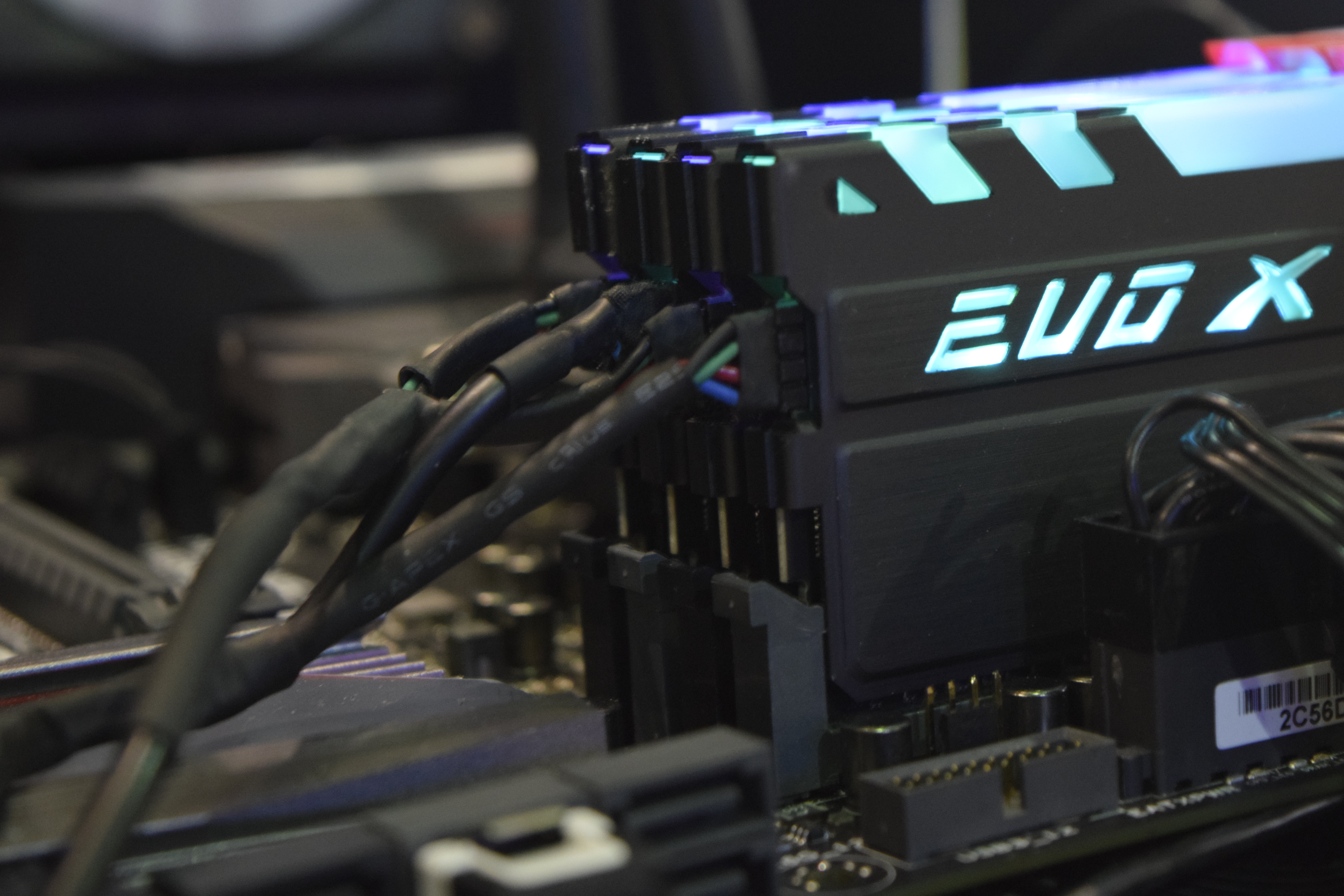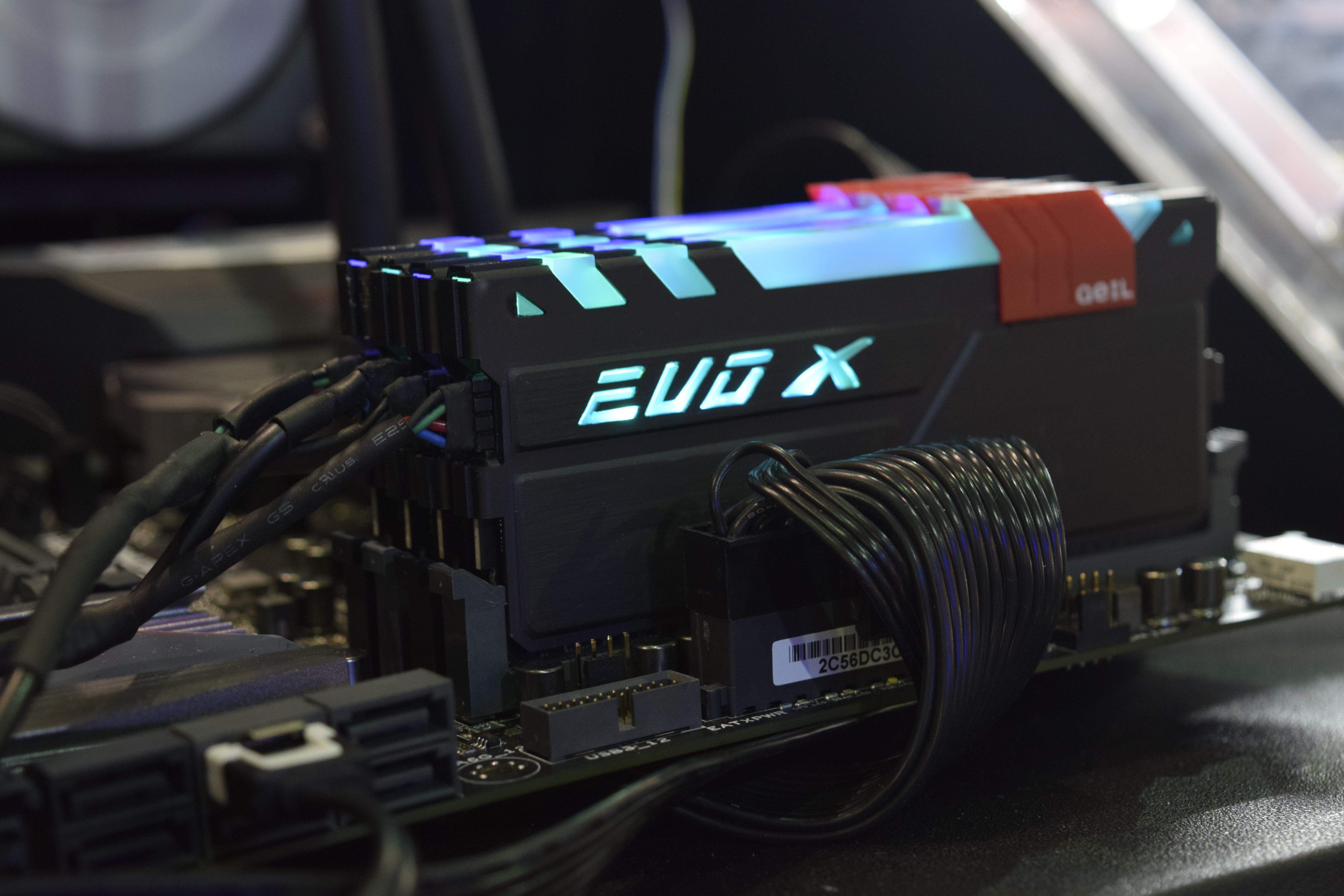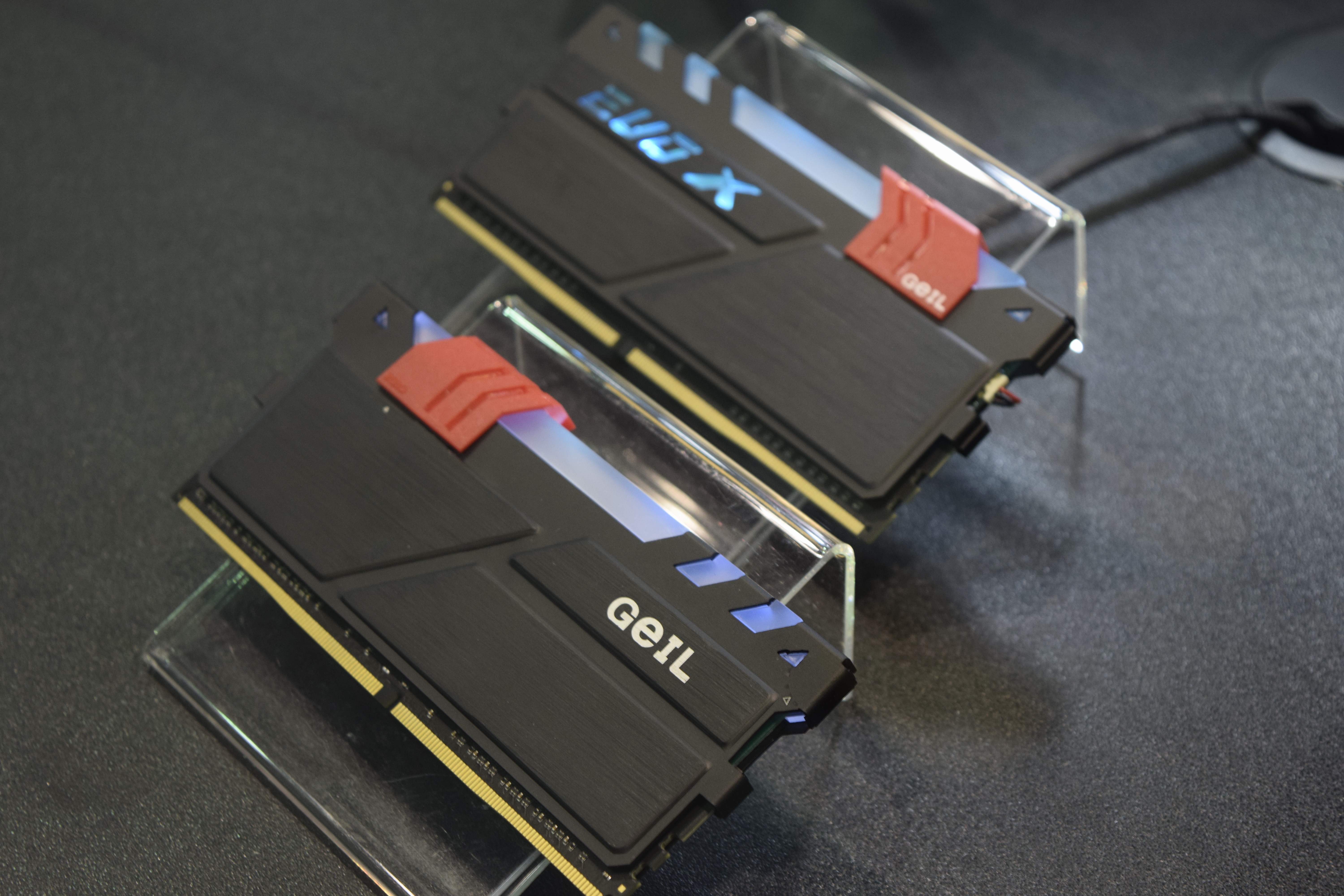Geil's Plans For RGB LED DDR4 RAM
Following the announcement of Geil’s Evo X RGB LED DDR4 memory, we had a chance to see the RAM up close and ask the company some questions in person at Computex. It should be noted that although these early RAM modules are problematic because of their power cables, the company has bigger plans for the RGB RAM in the future.
The main problem with Geil’s Evo X RGB LED RAM is that in order to power the LEDs, you need to run power cables to them from the motherboard. The company has improved this slightly by supplying cables that connect two RAM modules to the motherboard, but this only works on boards that have an LED strip header. Otherwise, you're stuck using one cable per DIMM.
The company said that it plans to overcome this issue by developing new cabling solutions that will eventually run a single cable to power all of the memory modules. We asked why the company doesn’t just simply pull power straight from the RAM slots to power the LEDs, and we were told that it wants to avoid this issue because it would reduce the performance of the memory.
Geil said that using power from the RAM slots not only increases heat on the RAM module because of the increased current, but because it takes power from the RAM, it's also more difficult to push up clock speeds. This made moving the LEDs to a separate piece of silicon and powering them with external cabling the best solution to achieve LED lighting and push up performance.
There are two other problems that the early Evo XRGB LED DDR4 memory faces: DIMM height and LED control. The LEDs add to the physical height of the DIMMs, which creates clearance problems with CPU coolers. Geil said it will eventually push out low-profile DIMMs so that even with the LED module on top, it will fit under most air coolers.
Geil does not supply any software to regulate the color or lighting patterns of the LEDs. Instead, it relies on motherboard software, which means that motherboard OEMs have to add support for the memory to control the LEDs. Asus is currently the only company that has obliged, but Geil is in negotiations with Asrock, Gigabyte and MSI to add support.
Even with the software support, though, the motherboard has to have a light strip header for that to work, and few motherboards have one, presently. A far better solution would be for Geil to develop its own software and route control for the LEDs into a simple USB 2.0 interface and provide a cable that plugs into an internal USB 2.0 header. The company said it doesn’t have any intentions to do that, though, so unless LED light strip headers become dramatically more popular, this RAM is going to have an extremely small market of users capable of using its full features.
Get Tom's Hardware's best news and in-depth reviews, straight to your inbox.
Although having RGB LED RAM will interest many users, this early implementation will need a considerable amount of work if Geil wants to sell it to a wide audience. Geil still couldn’t tell us how much this RAM would cost, but as it has some extra hardware, it will likely be more expensive than most DDR4 memory, which may discourage sales even more.
Geil said that the first of these DDR4 RGB LED RAM kits would show up roughly two weeks after we spoke, so if you have interest in owning one, start checking online retailers around June 18.
Follow Michael Justin Allen Sexton @EmperorSunLao. Follow us on Facebook, Google+, RSS, Twitter and YouTube.
-
nukemaster ReplyWhat's supposed to be the benefit of attaching lights to hardware inside a PC?
It makes the sticks faster. -
sillynilly Dumb and Dumber To all over again. Stop with the RGB lights! Soon our SSDs will have RGB lighting in them as well.Reply -
Reply
Dumb and Dumber To all over again. Stop with the RGB lights! Soon our SSDs will have RGB lighting in them as well.
Way ahead of you.
http://hexus.net/tech/news/ram/83729-avexir-launches-led-plasma-tube-equipped-ssds/
-
Gam3r01 So they are attempting to fix an issue they created by adding pointless lights?Reply
Are we supposed to be impressed that they got down to two cables (in very few cases) and in the future one? That sounds like a big step back dont you think.
Heres our new high end RAM, but you have to power it. -
nukemaster Reply
The LEDs are a separate board. That is why it needs power.18084136 said:So they are attempting to fix an issue they created by adding pointless lights?
Are we supposed to be impressed that they got down to two cables (in very few cases) and in the future one? That sounds like a big step back dont you think.
Heres our new high end RAM, but you have to power it.
Not that leds on everything do anything for me personally -
nukemaster Reply
Pointless gimmicks have been selling for years. Someone is buying all the led filled computer parts so they make more. I have no case window(well my old Antec 900 does, but yeah) and no use for anything other than the normal led indicators(Power/HDD. network would be nice too sometimes).18084211 said:Oh I understand completely why they have to do it, but its just a pointless gimmick.



